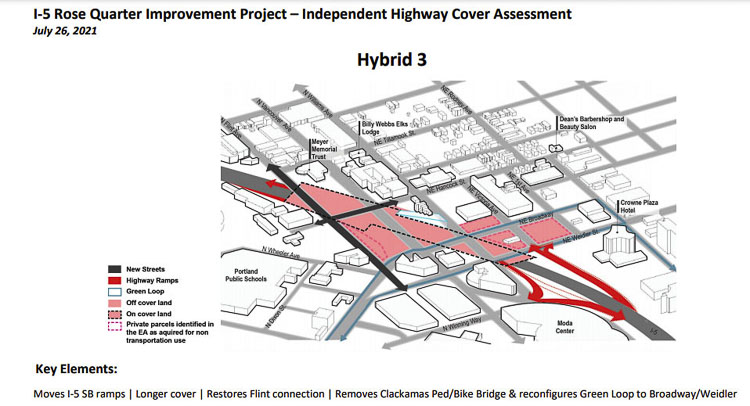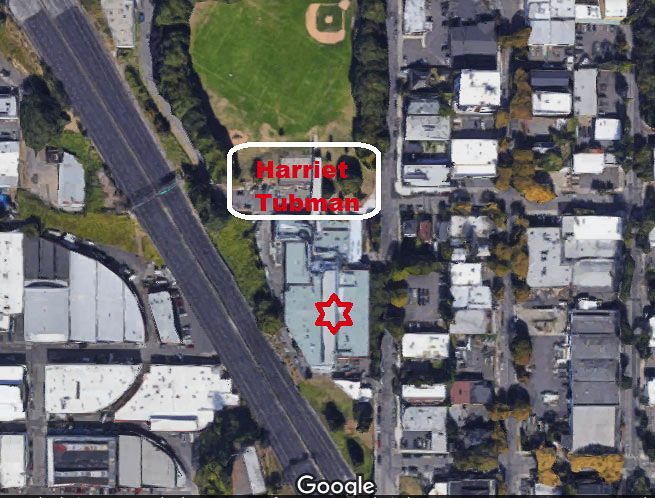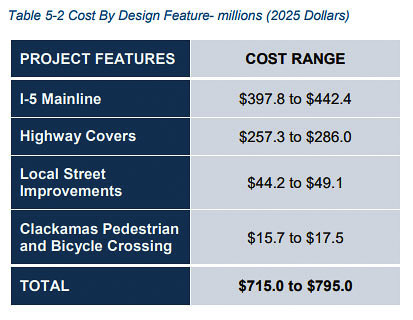ODOT moves to relocate Harriet Tubman school as part of I-5 project
The cost of Portland’s I-5 Rose Quarter project has exploded to possibly $1.25 billion according to recent reports. One large “highway cover” will apparently be built over I-5, creating real estate, and the Harriet Tubman Middle School will be moved.
The project was originally created and funded in Oregon HB2017, allocating $450 million of the $5.3 billion total statewide transportation package. The cost ballooned to $795 million within a year, as the Oregon Department of Transportation (ODOT) failed to include inflation estimates in their original cost projection. It’s now nearly triple.
Clark County Today has asked ODOT officials where the money will come from and has not yet received a response.
Will Clark County and Southwest Washington residents be asked to fund part of the estimated $800 million funding shortfall?
The original Rose Quarter project included two “lids” or covers over I-5. Politicians touted this as “community redevelopment” for the Albina neighborhood. It also contained a separate bike and pedestrian bridge over I-5. The highway covers and the bike/pedestrian bridge were alleged to cost almost half the original $450 million.

The Rose Quarter only has two through lanes in each direction on I-5. That is the only two-lane section on I-5 in an urban area from Canada to Mexico. It is the number one bottleneck for traffic congestion in the entire region.
The original plan was to relocate on/off ramps and extend existing “auxiliary lanes,” making these lanes longer for merging on and off the freeway. A combination of vocal opponents joined together to oppose what they claimed was an “expansion” of the freeway. They included environmentalists worried about the climate, the No More Freeways group, and Bike Portland. Yet the original plan was to keep only two through lanes at the Rose Quarter.
After the Albina Vision Trust, the city of Portland, and others withdrew support, ODOT created the Historic Albina Advisory Board (HAAB) to fill the void and provide a voice for the minority community. The project has been mired in controversy for a long time.
In May, the Oregon Transportation Commission (OTC) voted for 12-foot shoulders on both the inside and outside of the project, and a new 12-foot auxiliary lane in the center of the highway according to one news report.
The draft Constructability and Cost Analysis Report for the Rose Quarter Independent Cover Assessment, dated June 2, estimates covering the highway would cost more than $500 million. Covers that could support five-story buildings would cost roughly $200 million more according to a news report.
Last week, Oregon Governor Kate Brown negotiated a compromise which will bring the Albina Vision Trust back to the table. It will include a single, larger highway cover creating real estate for the Black community. They will be allowed to own real estate they build on top of the caps. Highway covers that support five-story buildings would add to the cost.
The larger, single highway cover will require an expenditure of $18 to $25 million for “fire and life safety” protection equipment according to a January cost estimate. That could be higher with the compromise agreement.

Additionally, air quality issues had been raised for the Harriet Tubman Middle School, with roughly 500 students in classrooms. The compromise commits to moving the school away from its present location. No cost was given for moving the school, nor who would pay.
The Portland Tribune called for the Portland Public Schools and ODOT to split the cost, 50/50. The school district wants the state to pay the full cost.
The cost to move the school is estimated at $84 million, not including the 6 to 9 acres of land needed for the new site which the district would want to remain in the Albina community, according to a former school board member.
Details within the governor’s announcement indicate the following. It moves I-5 southbound ramps; it has a longer cover; it restores the Flint connection; it eliminates the planned Clackamas Ped/Bike bridge and reconfigures Green Loop to Broadway/Weidler.
The relocated southbound off ramp apparently presents challenging turning radii, especially for freight. It also creates the potential for traffic to backup onto the I-5 mainline, which becomes a safety issue.
The document suggests ODOT consider shifting the I-5 centerline to the east (accommodated by narrowing the inside I-5 shoulders from 12 feet to 4 feet). This would provide more space for southbound off ramp geometry and improve the turning radius for truck movements.

The total cost of the project ranges from $1.18 billion to $1.25 billion. There will be an estimated 10-12 month delay for redesigning the project and additional environmental review and technical analysis. They expect an additional six months of construction time for SB ramp relocation and the wider cover. The original plan was for construction to begin in 2023 and the project to be completed in 2027.
The January cost report stated a three-year delay would incur an additional $66 million to $86.4 million in delay-related inflation costs, plus an additional $10 million to $15 million for the cost to prepare and deliver the EIS.
In June, members of Oregon’s federal delegation Senators Ron Wyden and Jeff Merkley and Congressman Earl Blumenauer, sent a letter to Governor Brown promising to fight for federal dollars for the I-5 project as long as the highway cover was included in the design.
Yet those same people have been promising to fight for federal dollars for the Interstate Bridge replacement. Oregon Congressman Peter Defazio and Blumenauer have been at the forefront of pushing light rail and federal dollars for the IBRP.
That is now projected to cost between $4 billion and $5 billion and has no identified funding sources. It is unclear if any money from the federal $1 trillion infrastructure package will be available to cover any part of the possible $6 billion cost of the two projects.
Tolling remains a significant part of the funding discussion of both projects. As members of the Vancouver City Council stated earlier this week, is Oregon unfairly targeting Clark County residents in paying for their transportation programs?




